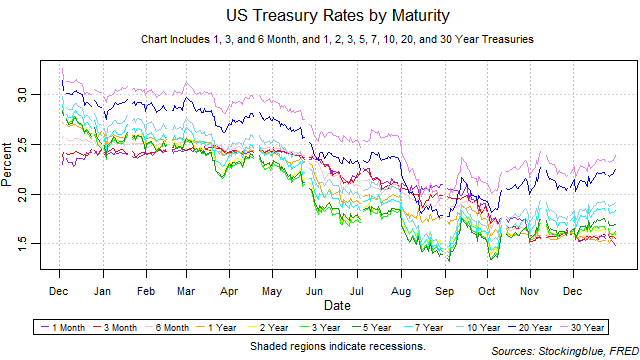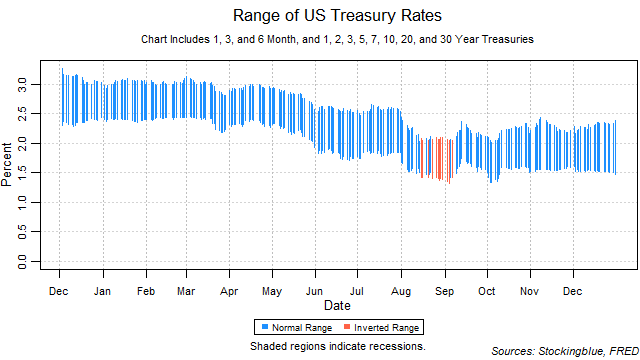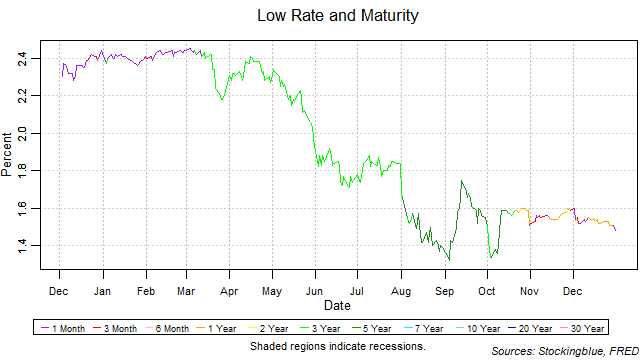
The one, three, and six-month, and the one and two year rates fell in December while all other rates rose. The yield curve widened from the previous month thus ending its narrowing streak of one month. The one-month bill did not maintain the lowest rate throughout the month. Long-term rates rose while short-term rates dropped thus decreasing the risk of an inversion brought upon by rising short-term rates. Such an inversion, if it were to happen would be a strong indicator for an upcoming recession.
Findings
- The one, three, and six-month, and the one and two-year rates dropped in December. All other rates rose.
- The 20 and 30-year rates saw the largest absolute growth at 0.18 points.
- On a relative basis, the 20-year rate grew the most with a 8.70 percent rise.
- The one-month rate saw the largest absolute drop at 0.14 points.
- On a relative basis, the one-month rate dropped the most with a 8.64 percent drop.
- The one-month bill did not maintain the lowest rate throughout the month. The three-month, one and two-year treasuries also had the lowest rate.
- The yield curve widened from 0.62 to 0.91.
Caveats
- As always, past performance is not indicative of future results.
- All figures are rounded to the nearest hundredth.
Details

The breadth of the yield curve widened over the month from a range of 0.62 to a range of 0.91. The widest range was 0.91 which was hit on December 31 and the narrowest 0.64 which was hit on December 3. The last time the yield curve was this wide was on December 3, 2018 when it hit a range of 0.97.

The thirty-year bond held the highest rate throughout the month. It rose steadily throughout the month. It has remained at or above 2.15 percent for the entire duration of the month. The last time the 30-year rate hit this month's high of 2.39 was on November 12, 2019 when it was at 2.39.

The one-month bill did not hold the lowest rate for every session of the month. The three-month, one and two-year treasuries held the lowest rate on 14 occasions. The one-month did not hit a new 12-month high extending its streak of no new 12-month highs to nine months.
Sources
"Treasury Constant Maturity," Federal Reserve Bank of St. Louis, accessed January 7, 2020, https://fred.stlouisfed.org/categories/115.